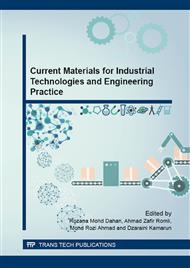p.203
p.209
p.213
p.220
p.225
p.231
p.236
p.243
p.249
Characterizing Mechanical Properties of Peroxide-Vulcanized Natural Rubber Latex Films
Abstract:
Natural rubber latex is the material of choice for the fabrication of thin elastic films in many products such as gloves and condoms owing to its high strength, elasticity, comfort in use, good barrier properties and ‘green image’ [1, 2]. This unique combination of characteristics has its origins in the intrinsic properties of the crosslinked polymer network within the rubber matrix. The crosslinking of rubber hydrocarbon chains by free radicals generated from peroxide has been discovered for many years [3]. In peroxide crosslinking reactions, organic peroxide decomposes to produce reactive free radicals that will react to release hydrogen ions from the carbon hydrogen in the polymer chain, encouraging formation of free radicals on the rubber molecular chains. As the free radicals react with the polymer chains, the carbon hydrogen in the chains act as reactive centre that combines with centres of other rubber chains to form a network of carbon to carbon bonds which serve as crosslinks [3, 4].
Info:
Periodical:
Pages:
236-242
Citation:
Online since:
December 2015
Price:
Сopyright:
© 2016 Trans Tech Publications Ltd. All Rights Reserved
Share:
Citation:


